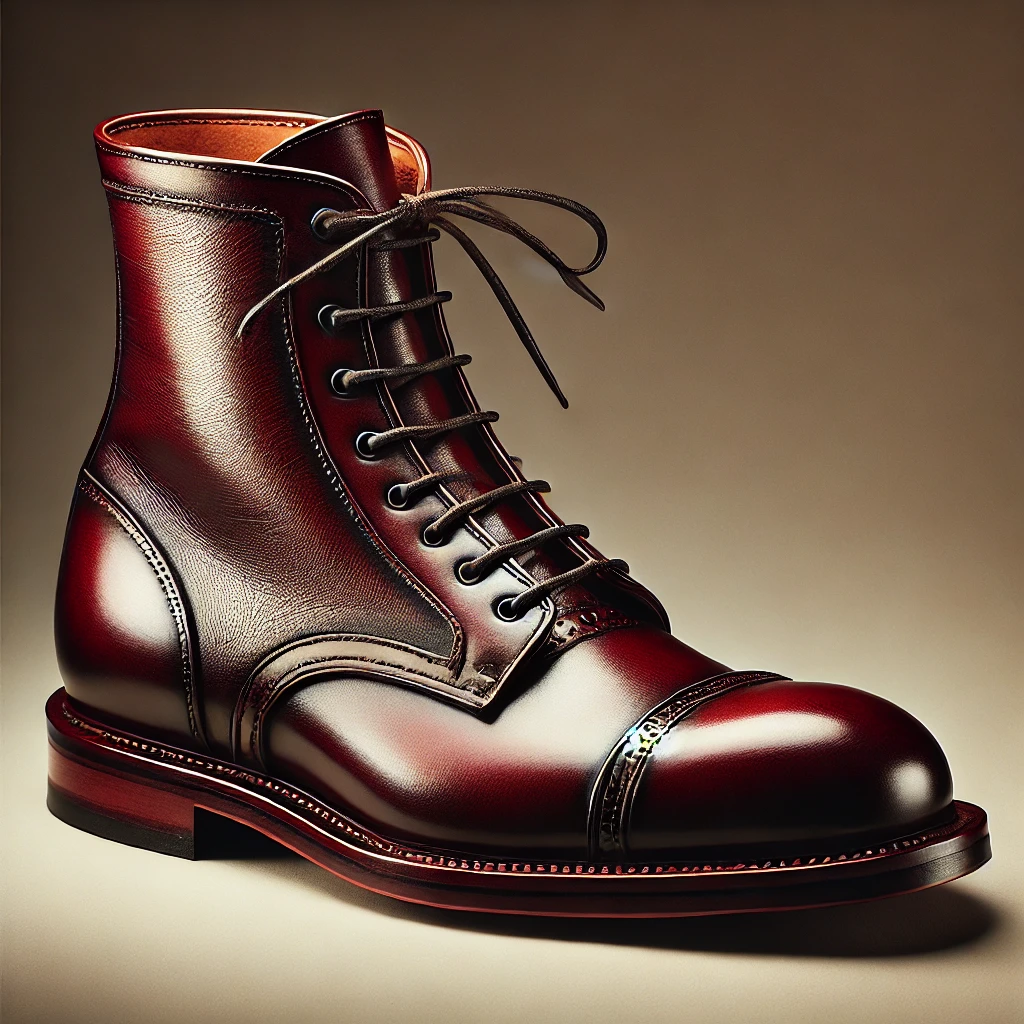Chromexcel vs Shell Cordovan: Heritage Boot Leather Comparison
Choosing between Chromexcel and Shell Cordovan for your next heritage boots isn't just about price—it's about understanding two fundamentally different approaches to premium leather. While Chromexcel offers that coveted pull-up effect and casual versatility at $400-600, Shell Cordovan commands $800-1,500 with its mirror-like shine and legendary durability. Let's break down what really matters when investing in either of these iconic leathers.
What Makes These Leathers Different
Chromexcel, perfected by Chicago's Horween Tannery since 1913, is a combination-tanned leather that undergoes an 89-step process involving chrome tanning, vegetable re-tanning, and hot-stuffing with oils and waxes. This creates leather with incredible depth of color and that signature "pull-up" effect where the leather lightens when flexed.
Shell Cordovan comes from a specific membrane beneath the hide on a horse's rump—only producing enough leather for about two pairs of boots per horse. The tanning process takes six months and involves vegetable tanning followed by hand-glazing, creating an incredibly dense, smooth leather that develops a unique patina over decades.
Visual Characteristics and Aging
Chromexcel Aging
- Develops rich patina within months
- Shows scuffs and scratches that often "heal" with brushing
- Color variation increases with wear
- Grain break creates character but can look messy to some
- Natural pull-up effect adds visual interest
Shell Cordovan Aging
- Maintains consistent color for years
- Develops subtle depth rather than dramatic patina
- Rolls rather than creases at flex points
- Can develop "water spots" if not properly dried
- Achieves mirror shine with minimal effort
Performance in Different Conditions
Weather Resistance: Chromexcel wins for versatility. Its oil and wax content provides decent water resistance, making it suitable for three-season wear. Shell Cordovan, despite common misconceptions, handles moisture well but requires immediate drying to prevent spotting. Neither is ideal for heavy rain or snow without treatment.
Temperature Sensitivity: Chromexcel remains supple in cold weather while Shell Cordovan can feel stiff below 40°F until it warms to body temperature. In hot weather, Chromexcel may feel slightly tacky, while Shell maintains its structure.
Durability: Shell Cordovan's density makes it nearly indestructible for dress wear—many report 20+ years of regular use. Chromexcel is durable but shows wear faster, though many consider this "character" rather than damage.
Break-In Experience
Chromexcel typically requires 20-40 hours of wear for full break-in. Initial stiffness gives way to buttery softness, though loose grain can develop in lower grades. Expect some heel slip initially and potential hot spots around the ankle.
Shell Cordovan demands patience—figure 80-100 hours for proper break-in. The leather barely stretches, making initial fit crucial. Once broken in, Shell molds precisely to your foot and maintains that shape indefinitely. The rigid break-in pays dividends in long-term comfort.
Care Requirements
Chromexcel Care
- Brush regularly with horsehair brush
- Condition every 3-6 months with light conditioner
- Avoid over-conditioning (leather is already oil-stuffed)
- Use matching cream polish for scuffs
- Tree boots between wears
Shell Cordovan Care
- Brush vigorously with horsehair brush (this is crucial)
- Use deer bone or smooth spoon for glazing
- Condition sparingly—once yearly maximum
- Never use regular leather conditioner
- Avoid cream polishes; use wax sparingly
Price Analysis and Value
Chromexcel boots from reputable makers (Red Wing, Grant Stone, Viberg) run $400-700. You're paying for quality leather and construction, with reasonable markups. The sweet spot sits around $500-550 for American-made Chromexcel boots.
Shell Cordovan commands premium pricing starting at $800 for Meermin, climbing to $1,500+ for Alden and Viberg. The leather alone costs manufacturers $100+ per square foot. Limited supply and lengthy production justify some premium, though brand positioning inflates prices further.
Best Use Cases
Choose Chromexcel for:
- Casual and smart-casual wear
- Variable weather conditions
- First premium boot purchase
- Those who appreciate visible patina
- Budget-conscious quality seekers
Choose Shell Cordovan for:
- Business casual to formal settings
- Long-term investment pieces
- Minimal maintenance preferences
- Collectors and enthusiasts
- Special occasion boots
Brand Comparisons
Best Chromexcel: Viberg's Chromexcel selection showcases the leather's potential with careful clicking and quality control. Alden's Chromexcel can be inconsistent, while Grant Stone offers exceptional value. Red Wing's "Oil-tanned" leather performs similarly to CXL at lower prices.
Best Shell Cordovan: Alden remains the gold standard for Shell Cordovan boots, with exclusive colors and decades of expertise. Viberg's Shell offerings command top dollar but deliver flawless execution. For value, Meermin and Carmina offer genuine Shell at more accessible prices.
The Verdict
Neither leather is objectively superior—they serve different purposes in a boot rotation. Chromexcel excels as an everyday leather that ages beautifully and handles abuse gracefully. Shell Cordovan shines (literally) in situations demanding refinement and rewards patience with decades of wear.
For most buyers, starting with Chromexcel makes sense. It's forgiving, versatile, and helps you understand quality leather without the Shell Cordovan investment. Once you've established your style preferences and understand proper boot care, Shell Cordovan becomes a worthy upgrade for special pieces.
The sweet spot? Own both. A pair of Chromexcel boots for weekend adventures and casual Fridays, plus Shell Cordovan for business meetings and special occasions. Your feet—and style—will thank you.
